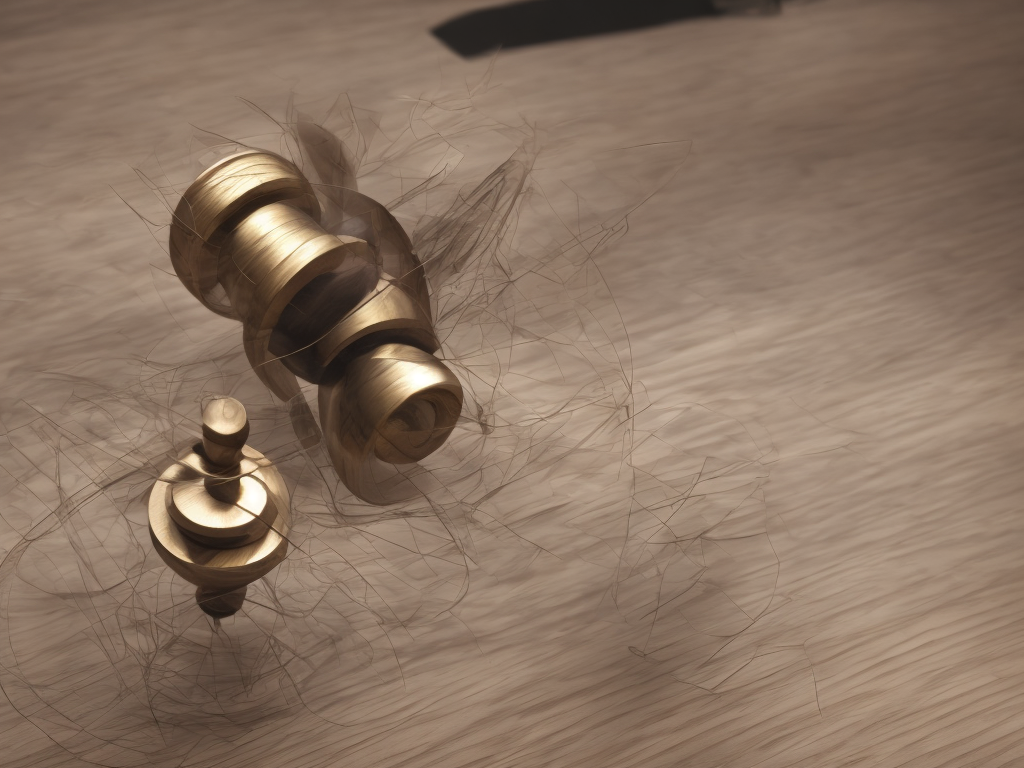
The radius of gyration is an important concept in physics and engineering that helps determine the distribution of mass or weight of a body around its center of mass. In simple terms, it is a measure of how far the mass of an object is from its axis of rotation or its center of mass, and how easily it can rotate about that axis.
The radius of gyration (k) is defined as the square root of the ratio of the moment of inertia (I) of an object about its axis of rotation to its mass (m). Mathematically, the formula can be expressed as k = √( I/m ).
The moment of inertia (I) is a measure of an object's resistance to rotational motion or change in its motion. It depends on several factors such as the mass distribution, shape, and size of the object, and the distance of each mass element from the axis of rotation. The greater the moment of inertia, the greater the force required to start or stop the rotational motion.
The mass (m) refers to the total mass of the object or body. The radius of gyration gives an indication of how this mass is distributed or concentrated around the axis of rotation. In practical terms, it is used to design and analyze structures such as bridges, buildings, and machines to ensure stability, safety, and efficiency.
For example, a bridge that bends or sways too much under the weight of passing vehicles can be analyzed using the radius of gyration to determine the most efficient and safe position of the mass distribution.
There are different ways to calculate the radius of gyration depending on the physical characteristics of the object or the type of motion involved. Some common methods include:
1. Steiner's Theorem
This theorem is used to calculate the moment of inertia of an object that is away from the axis of rotation or the center of mass. It states that the moment of inertia of an object about an axis parallel to its original axis, at a distance (d) from the original axis, is equal to the moment of inertia about the original axis plus the product of the mass (m) of the object and the square of the distance (d) between the two axes. Mathematically, it can be expressed as I = I0 + md^2.
Using this equation, we can derive the expression for the radius of gyration as k^2 = I0/m, where I0 is the moment of inertia about the object's center of mass.
2. Parallel Axis Theorem
This theorem is another method for calculating the moment of inertia of an object that is away from its center of mass or axis of rotation. It states that the moment of inertia of an object about any axis parallel to its center of mass is equal to the moment of inertia about its center of mass plus the product of its mass and the square of the distance between the two axes. Mathematically, it can be expressed as I = Icm + md^2.
Using this equation, we can derive the expression for the radius of gyration as k^2 = Icm/m, where Icm is the moment of inertia about the object's center of mass.
3. Torsional Pendulum
A torsional pendulum is a simple device used to measure the radius of gyration of objects that undergo rotary motion. It consists of a long, thin rod or wire suspended from a fixed point, with a body attached to one end. The body is twisted and released, and it oscillates back and forth in a circular motion.
By measuring the period of oscillation of the pendulum and knowing the moment of inertia and mass of the body, we can calculate the radius of gyration using the formula k^2 = It/mT^2, where It is the moment of inertia of the torsional pendulum, m is the mass of the body, and T is the period of oscillation.
4. Simple Pendulum
A simple pendulum is another device used to measure the radius of gyration of objects that undergo linear motion. It consists of a mass suspended from a fixed point by a light string or rod, and it swings back and forth under the influence of gravity.
By measuring the period of oscillation of the pendulum and knowing the length and mass of the string or rod and the mass of the body being oscillated, we can calculate the radius of gyration using the formula k^2 = L^2 (T^2g/4π^2)/m, where L is the length of the pendulum, T is the period of oscillation, g is the acceleration due to gravity, and m is the mass of the body.
The radius of gyration has several practical applications in engineering, physics, and sports. For example, it is used in designing baseball bats and tennis rackets to optimize their weight distribution and improve their performance. It is also used in analyzing the stability of a spinning top, the behavior of a diving board, and the safety of amusement park rides.
In summary, the radius of gyration is a vital concept in physics and engineering that helps us understand the distribution of mass or weight of an object around its axis of rotation or center of mass. By calculating the radius of gyration, we can design and analyze structures and devices to ensure stability, safety, and efficiency.
 Self-Instruct
Self-Instruct